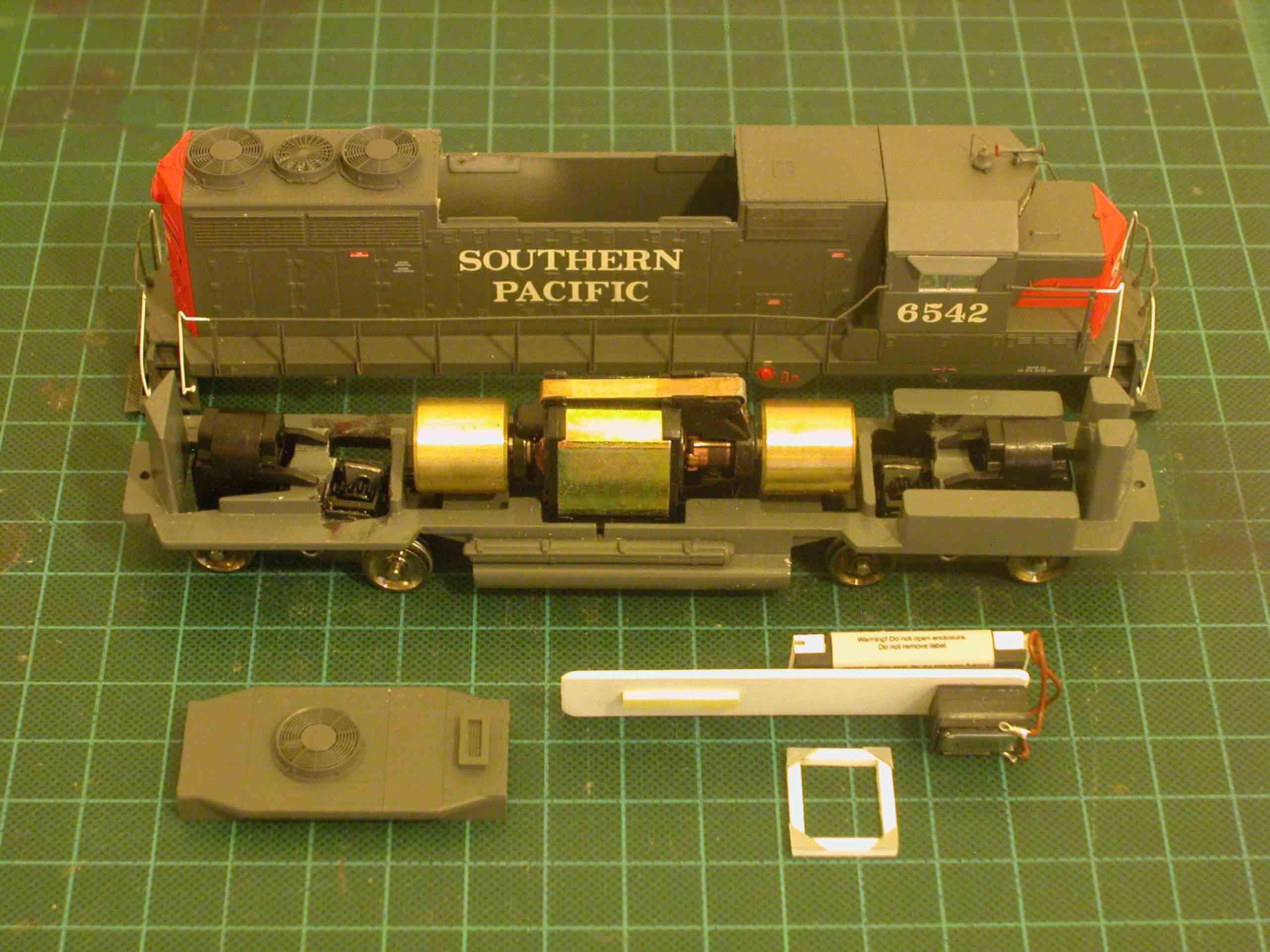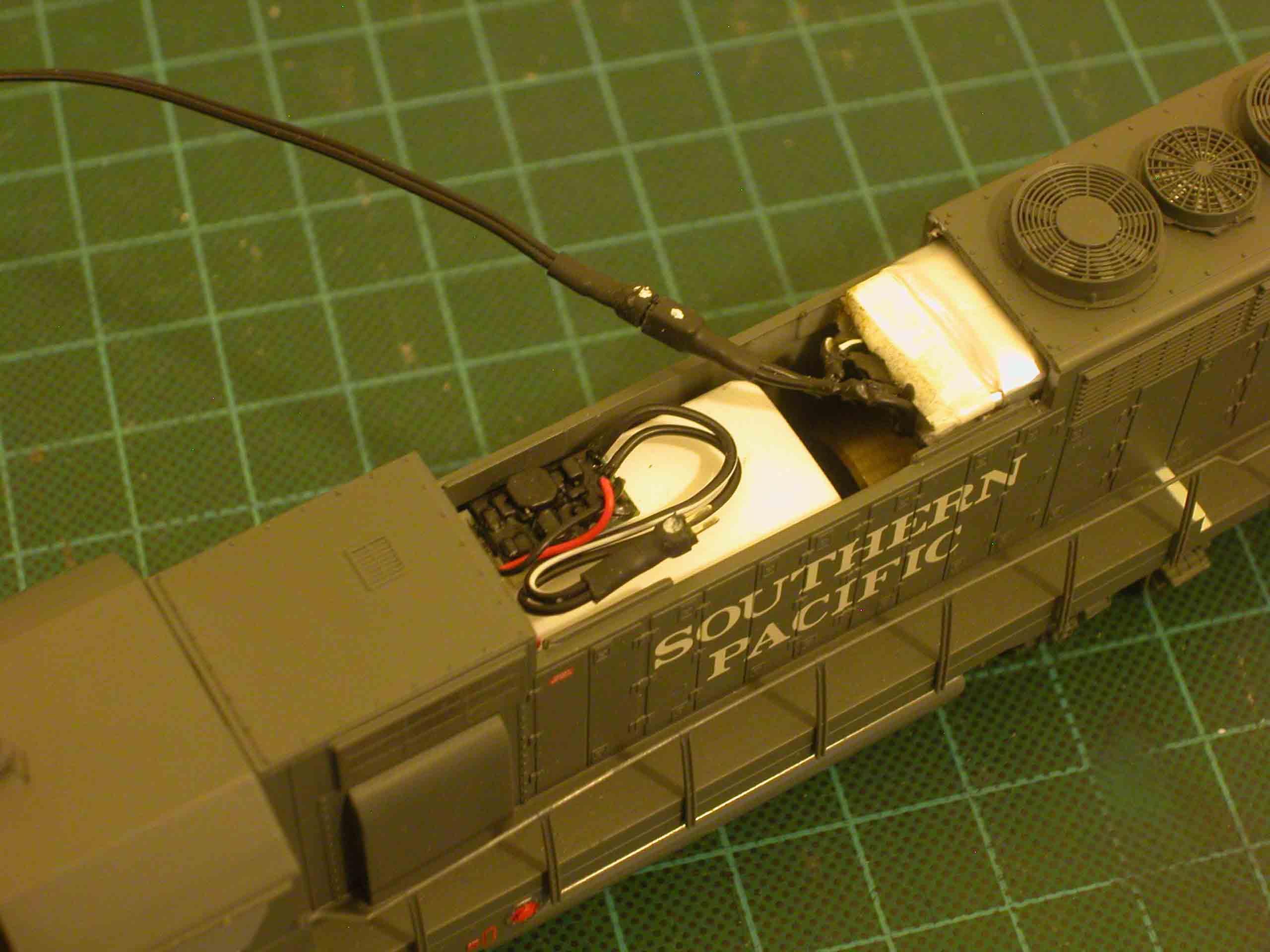Here goes, (if I can get this emall stuff to work), The first picture shows the subassemblies laid out. The battery (two 500mah cells) were not included here as they were in process. The main electrical structure holds the RailPro, the sugar cube speaker (below it), and the small narrow rectangle on the underside is double sided foam tape to connect the assembly to the top of the motor.


The ‘picture frame’ below this supports the structure from falling onto the front drive train, it is glued to the loco’s frame but not the electrical unit. This makes for easier dis/assembly. Also, you can now see the batteries stuck to the body.


At this point the body literally drops onto the frame and the couplers hold the loco together. It’s clear that this conversion has no lights. It is a Mule, I try all kinds of stuff on this chassis, it deserves a purple heart.
Finally, the third picture shows the attachment to the charger. The fourth picture shows the battery plugged in and the loco is running. Doing this removes the need for a DPDT switch and some sort of socket for the charger. In tight circumstances like this one it would be unduly complicated and bulky to go that route.




Going back to the first picture, the dynamic brake casting serves as the hatch. The idea for this conversion happened when I was looking at the underside of the body and noticed it was a separate piece. When was able to break it out, I figured the conversion was a real possibility. Once the hatch is back in place it looks like just any other Athearn GP35.
Cheers, I have run this loco on the workbench circle for well over an hour and the battery has plenty left. Tomorrow the loco, Jerry and I head for a friend’s layout. It is an industrial scene with a ton of switching. We’ll see how this one works.
Thanks,
Terry